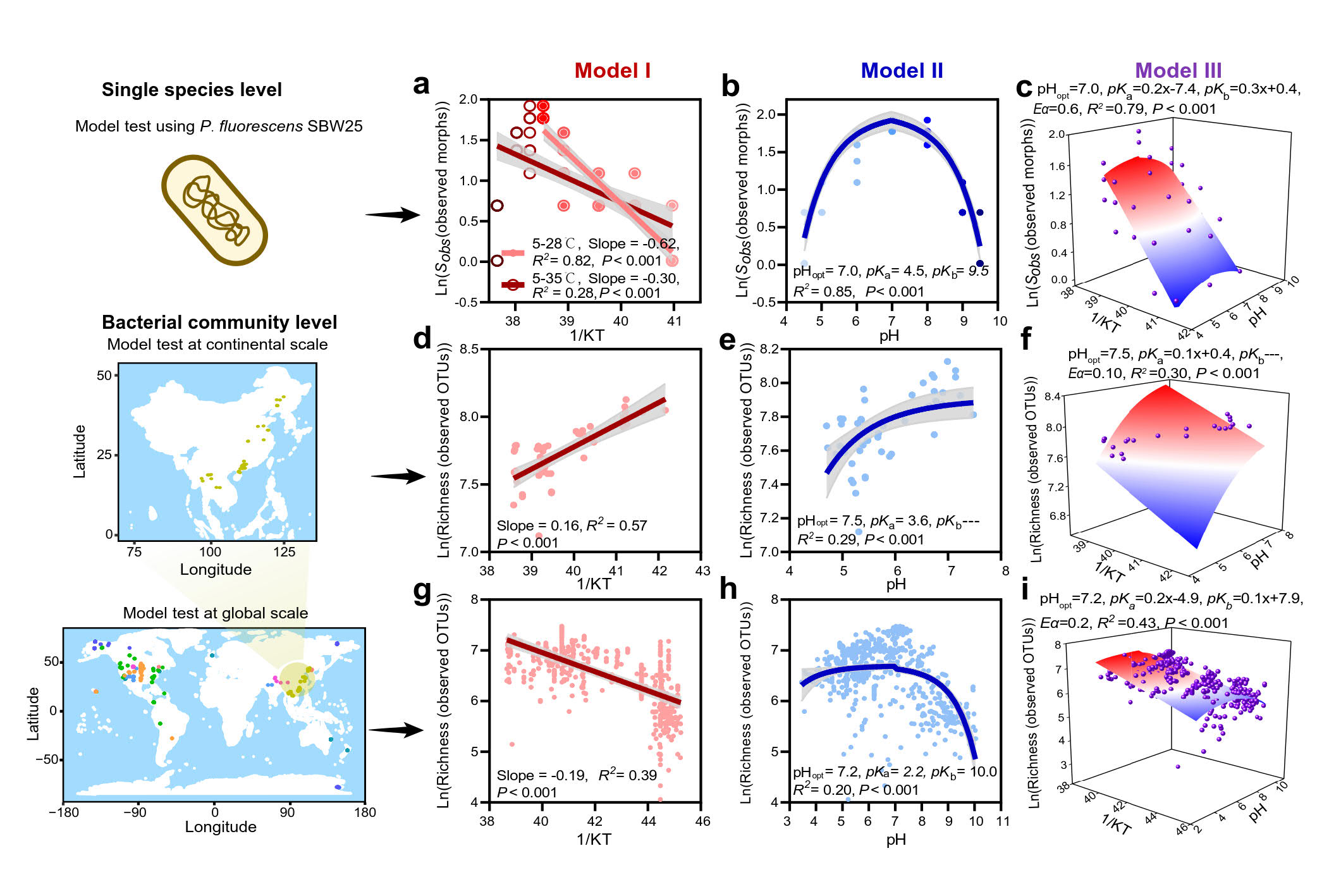Soil biodiversity is extremely complex and diverse, with millions of species and billions of individual organisms being found within a handful of soil. Disentangling the main mechanisms determining the biogeographical patterns of bacterial diversity has remained a considerable challenge (Bahram et al., 2018, Nature). The famous ecologist James H. Brown first put forward a promising framework, namely metabolic theory of ecology (MTE) (Brown et al., 2004, Ecology). MTE predicts that the number of species increases exponentially with the environmental temperature (Rμe-E/kT), which is widely used in predicting the general macroecological patterns for the diversity of animals and plants. However, the previous research to empirically evaluate the applicability of MTE to soil microbial communities produced contradictory results. The interactions between temperature and soil properties (especially soil pH) in shaping soil microbial diversity remain unknown.
A research team led by Prof. SUN Bo and JIANG Yuji from Institute of Soil Science, Chinese Academy of Sciences has established a quantitative model to incorporate pH into metabolic theory to capture and explain some of the unexplained variation in the relationship between temperature and soil bacterial diversity. Their findings were published in PNAS (https://doi.org/10.1073/pnas.2207832120).
The research team developed a mathematical model to test whether the incorporation of pH could improve the capacity to explain the variation in bacterial diversity at different spatial scales in soil. Then, tested and validated their newly-developed models at three different levels.
At the species level, they modeled the diversification rate of the model bacterium Pseudomonas fluorescens evolving under laboratory media gradients varying in temperature and pH. At the community level, they modeled patterns of bacterial communities in paddy soils across a continental scale, which included natural gradients of pH and temperature. Last, they further extended their model at a global scale by integrating a meta-analysis comprising 870 soils collected worldwide from a wide range of ecosystems.
Results were robust in consistently predicting the distributional patterns of bacterial diversity across soil temperature and pH gradients ? with model variation explaining from 7%?66% of the variation in bacterial diversity, depending on the scale and system complexity.
“Our study represents a nexus point for the integration of soil bacterial diversity and quantitative models with the potential to be used at distinct spatiotemporal scales. Our results highlight the capacity to explain and predict the patterns of bacterial diversity under future climate change scenarios. This work is important for protecting soil microbial diversity and maintaining ecosystem health in the acid rain regions under global climate warming, especially in the tropical region with acidic soils and suffering from acid rain in East and Southeast Asia.” said Prof. Sun.
 |
 |
| Fig. 1. Conceptual framework of taxa diversification |
Fig 2. Model fit from the single species level to the community level at continental and global scales |
